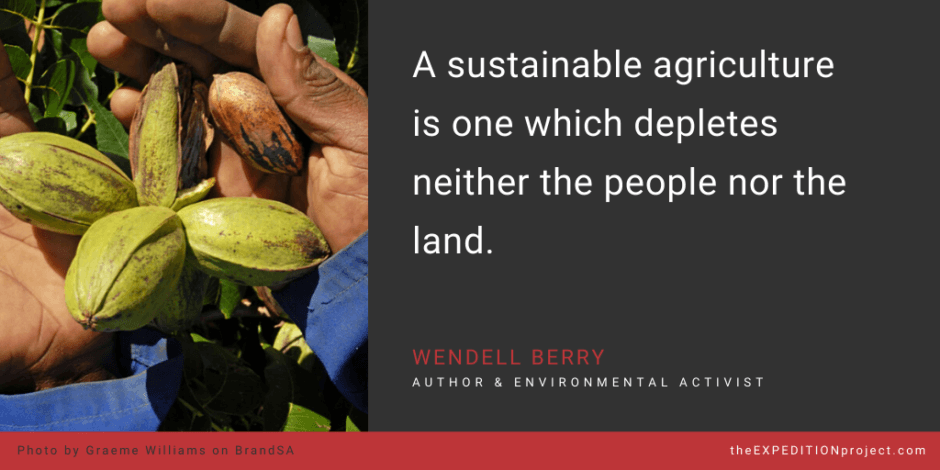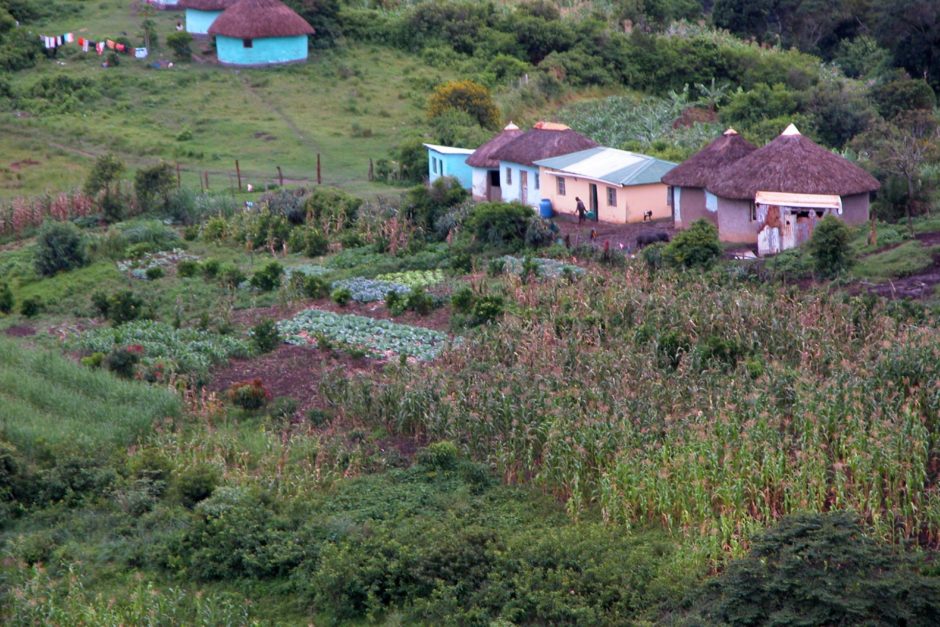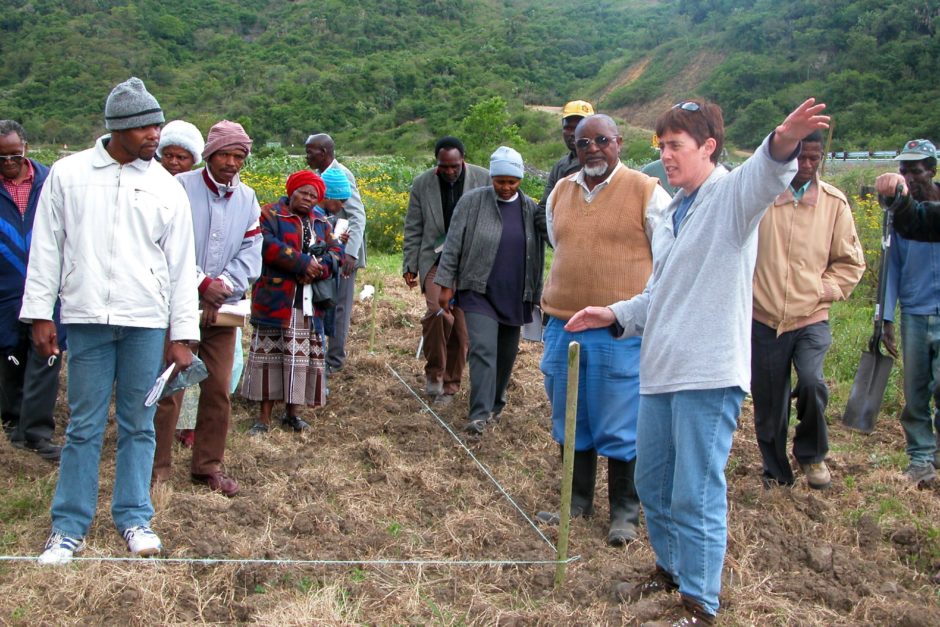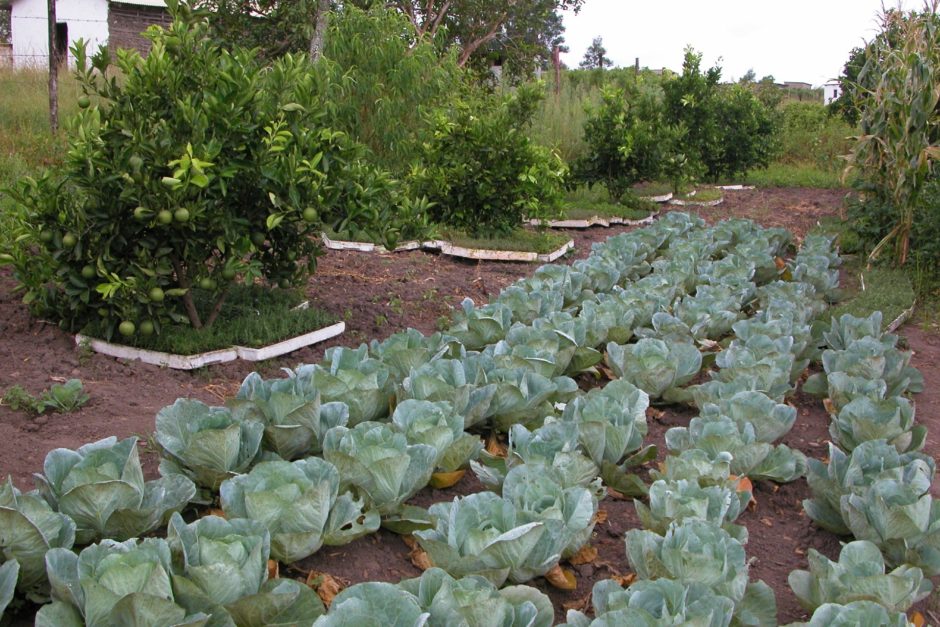Traditional agriculture can harm the environment, produce greenhouse gases and contribute to climate change. But sustainable farming methods can do the opposite — increase resilience to climate change, protect biodiversity and use natural resources responsibly. Conservation Agriculture is one such system that aims to achieve sustainable and profitable farming while protecting the environment.
In this article, we’re investigating the how and why of conservation agriculture as an alternative to conventional farming. Along the way, we’ll introduce you to a South African programme that is using this farming system to change the lives and futures of small rural producers.

Principles of Conservation Agriculture
Permanent Organic Soil Cover
Conservation agriculture requires that at least 30 percent of the land is permanently covered with plant material. Organic matter is critical to soil health. It makes fertilizer use more efficient and boosts the soil’s ability to hold water and nutrients. Additionally, it helps with soil aggregation and creates an ideal rooting environment.
Adding a layer of organic matter over the soil turns the lands into large composting areas. On the surface, the mulch stops the soil from drying out. It also helps rainwater to percolate into the soil instead of running across the surface, preventing erosion.
Under the surface, earthworms, bacteria, fungi and insects slowly break the plant material down. This releases nutrients directly into the soil. The earthworms also create channels for water and air. Altogether, this rotting material acts like a sponge to hold moisture and nutrients in the soil.

Source: Agricultural Research Council
Minimum Soil Disturbance
Ploughing soil exposes a very delicate ecosystem to the air and sun, drying it out and killing the organisms in it. This strips it of nutrients and its ability to absorb and hold water. With its structure destroyed, it compacts and hardens. Water starts running off the hard surface, causing soil erosion.
With conservation agriculture, the soil is not tilled. Instead, farmers prepare land is by mowing down existing plants (weeds, cover crops or previous crop remains). Next, they seed directly through this mulch. Because the soil is not disturbed, a stable soil ecosystem is created to support plant health.

Source: Agricultural Research Council
Crop Diversity
The main aim of commercial agriculture is to increase yields and profits by cultivating one distinct crop, or monoculture. This approach relies heavily on chemicals to provide enough nutrients for growth. Even more chemicals are needed to prevent crop damage from weeds, insects, and bacteria. By going against nature, it can cause irreversible damage to the eco-system.
By contrast, conservation agriculture maintains genetic biodiversity, building up the environment rather than stripping it bare. It relies on two alternatives to monoculture. The first is intercropping, where farmers grow two or more crops at the same time on the same piece of land. The other is crop rotation, where two different crops are grown on the same land in succession. This diversity makes it easier to curb pest outbreaks and diseases, thus improving resilience. It also offers protection against climate change and extreme weather events, which can destroy huge mono-crops overnight.

Farming into the Future
Conservation agriculture yields many environmental benefits. It enhances biodiversity and natural biological processes, both above and below the ground. It increases available groundwater, makes crops more resilient to heat and drought, and allows them to use water and nutrients more efficiently. This farming system builds up soil health in the long run, instead of depleting it. It is able to reverse land degradation, stabilizing and protecting soil from breaking down and releasing carbon to the atmosphere.
Farmers also gain a lot from conservation agriculture. It is 20 to 50 percent less labour intensive than mainstream farming, making it more efficient and viable for small producers. It is also more cost effective because it doesn’t require the machinery, fuel and maintenance that commercial agriculture does. Furthermore, it helps farmers to improve and sustain production and profitability. But the most important benefit may be that it allows them to respond to the growing challenges of climate change.
For more about Uvuselelo, deeper insight into sustainable agriculture and the opportunity to make a real-world difference in the race to achieve Zero Hunger, sign up for our free course here: The FOOD Project [Virtual Volunteering]




Leave a Reply
You must be logged in to post a comment.